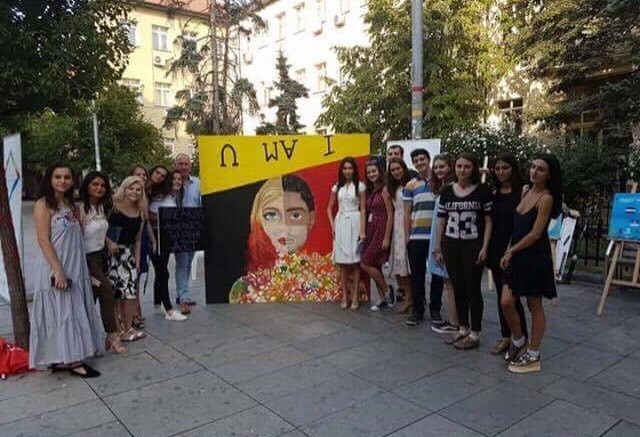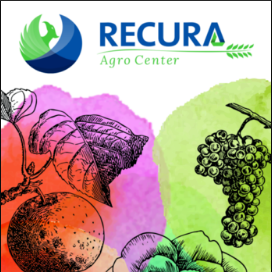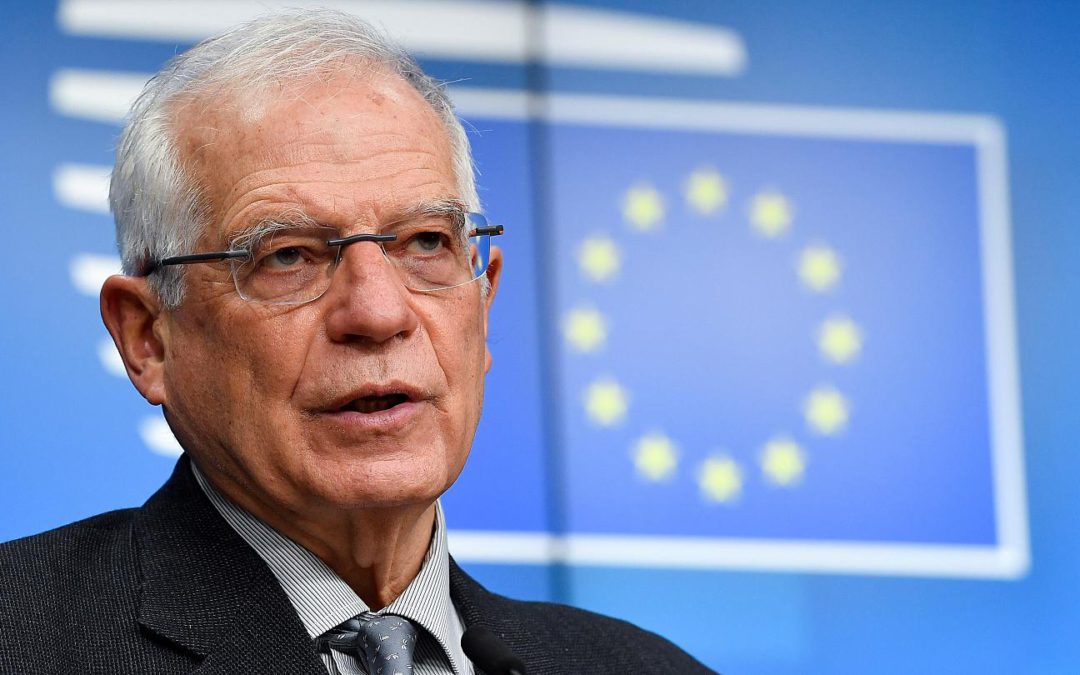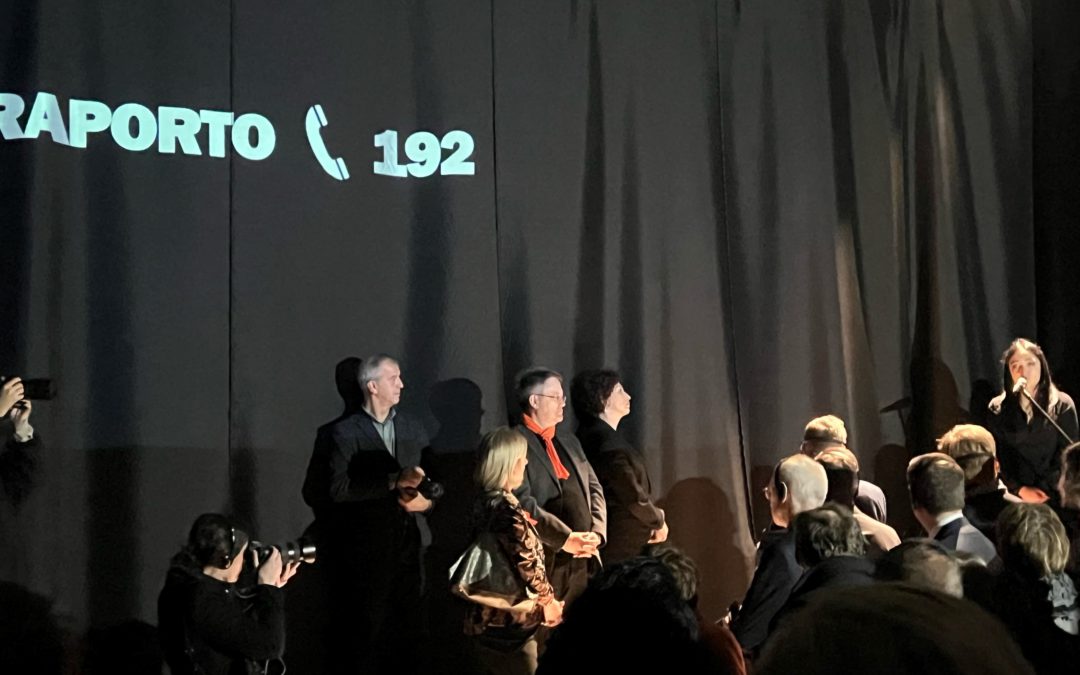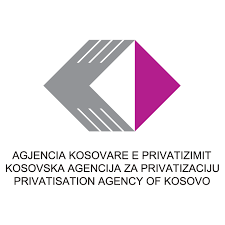Mirjeta Qehaja, a 22- year-old from Gjakova, who is in the last year of her studies in the Faculty of Arts of the University of Prishtina, “dreamed” of seeing the Roma, Ashkali, and Egyptian communities completely involved in the society of Kosovo.
She also belongs to this community and gives a concrete contribution to make her “dream” come true through her paintings. She expresses her life, her feelings, and the obstacles that this community faces through her paintings.
She showed her determination to overcome obstacles that have resulted in the exclusion of her community from society with her first individual exposition in a hall of Hotel “Orion,” in Prishtina, in the middle of September this year. It was called “Barrierat” (barriers).
“I have participated in a lot of expositions and one of them, called “Art breaks bounderies” impressed me. Today I am proving that art really surpasses all barriers,” says Mirjeta.
She believes that it is important what the artist does and not who he/she is and where he/she comes from.
“Earlier, I only hung out with Albanians and later with the minority community in which I belong, but I never had the chance to see them united like this. Today this dream has come true. The two sides of the coin joined and now it is complete,” she says.
Arbias Llolluni, student of public policies and management at the American University of Kosova- AUK, said that the exposition personifies the issue of including marginalized communities into the society.
“I believe that de jure, communities are integrated into our society but de facto they are not. In other words, we stigmatize each other in different ways, the majority and the minorities. A single exposition might not be able to break all social, cultural and historical barriers, but it can be one of the first steps toward a better future for all the citizens of Kosovo,” says Llolluni.
On the day of the exposition — which was supported by “Advancing Together”– the NGO “Romaversitas Kosova” opened the competition of the best photography and the debate, “The integration of Romans, Ashkalis and Egyptians in the society of Kosovo.”
A research study that was presented in this debate, showed that the main problems of these communities are severe economic conditions, and not bring informed of protective mechanism where they can address their problems… Discrimination and socialization are viewed as “bearable problems.”
According to the population census in 2011, there were 35,784 individuals from the Roma, Ashkali and Egyptian communities living in Kosovo. The vast majority of these ethnicities – in total 14,273 — lived in Gjakova, Fushë Kosova and Ferizaj.
Junik was the only municipality in Kosovo that had no residents belonging to these communities.
There are no exact statistics showing how many individuals from these communities are employed. Additionally, children dropping out of school because of their financial status is also a big problem.
Avni Mustafa, director of the “Romaversitas Kosova” organization with headquarters in Prishtina, has also dealt with the difficulties of the Roma, Ashkali and Egyptian communities every day.
He lives in a multiethnic village called Plemetinë in the municipality of Obiliq and sees people gathering cans and begging for money but not working on the fields growing vegetables, “because they don’t own the fields…”
He says that only one individual in the municipality of Obiliq belonging to these communities is employed.
The children from the Ashkali community go to Albanian language elementary schools that work within the Kosovo education system. If they can afford it, they can continue their high school in Obiliq.
On the other side, children from the Roma community go to Serbian language schools that use the Serbian education system and can also attend high school in Plemetina.
However, Avni believes that the discrimination of the Roma, Ashkali and Egyptian communities is most noticeable when it comes to doctors’ appointments because individuals from these communities in a way have to let Albanians and Serbians get ahead of them in queues.
“Even when I travel by bus, I can see a division, the Albanians and Serbians sit in one part and Roma, Ashkali and Egyptians sit in another part. This reminds me of racism times,” says Mustafa.
Avni Mustafa, a business administration student at the “Pjetër Budi” college, through “Romaversitas Kosova,”financially helps 155 students from these communities to get an education in the public universities of Kosovo.
“I don’t want them to accept their living conditions, I want them to challenge themselves, to be motivated to study and to say no to a mindset that believes that the minority cannot make a difference but only the masses can,” says Mustafa.
Mustafa also values the role of art in changing the prejudices of the majority of the population towards the communities in which he belongs.
Inspired by the challenges through which these communities have to go, Avni produced 54 video stories and three documentaries.
Fatlinda Daku, project manager of “Breaking borders through art,” supported by United Nations Interim Administration Mission in Kosovo (UNMIK), says that for a youth day in August they organized an exposition with 12 participants from all communities.
They painted pictures around the theme: breaking borders and communication obstacles between ethnicities.
“We found ourselves in art, music and movies. In different discussions we were convinced that we are not so different from each other. With an activity like this, we cannot say that we managed to integrate all communities, but we became an example of how youth can do something in this aspect,” says Daku.
Fjolla Hajrizaj
